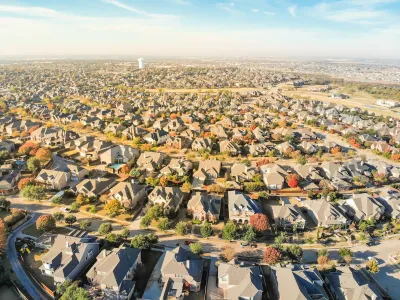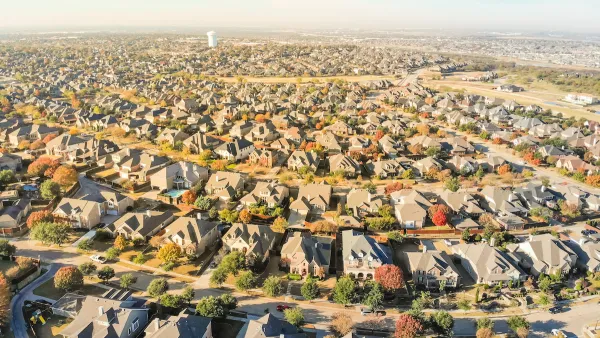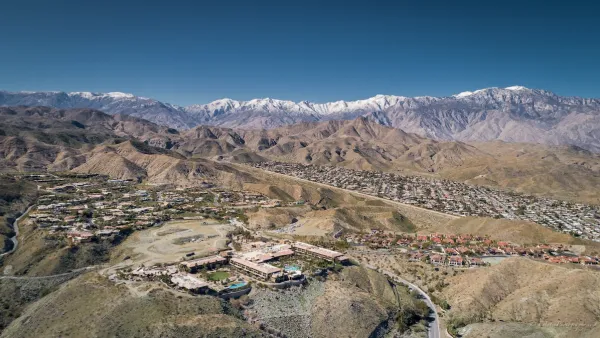Housing costs and availability are pushing more American households, including young families, to suburbs and exurbs — and they’re demanding changes.

Writing in Business Insider, Eliza Relman notes that “Most people in the US are suburbanites — and that likely won’t change anytime soon.” But that doesn’t mean suburbs and exurbs have to continue the unsustainable pattern of sprawl they have been known for for decades.
“As a suburb or exurb grows to accommodate more homes — which are mostly limited to detached single-family houses — roads grow, cars multiply, and the distance between someone’s house and their job, school, or grocery store stretches.” Consequently, “The challenge for urbanists, housing advocates, and anyone who cares about climate change is to figure out how to make the communities most Americans live in healthier for their inhabitants and the planet.”
Suburbs can change. They can become denser, more walkable, and more efficient, with mixed-use developments and essential needs within easy reach of residents. Already, restrictive zoning rules around the country are falling like dominoes as their impact on housing affordability becomes more evident.
According to the article, “all kinds of suburbs have the potential to free themselves from traffic and long commutes and create more vibrant neighborhoods. Suburbs need to prioritize loosening zoning laws, building more dense housing, and making it easier to get places without a car, experts say.”
FULL STORY: How millennials could give the suburbs a much-needed makeover

National Parks Layoffs Will Cause Communities to Lose Billions
Thousands of essential park workers were laid off this week, just before the busy spring break season.

Retro-silient?: America’s First “Eco-burb,” The Woodlands Turns 50
A master-planned community north of Houston offers lessons on green infrastructure and resilient design, but falls short of its founder’s lofty affordability and walkability goals.

Delivering for America Plan Will Downgrade Mail Service in at Least 49.5 Percent of Zip Codes
Republican and Democrat lawmakers criticize the plan for its disproportionate negative impact on rural communities.

Test News Post 1
This is a summary

Test News Headline 46
Test for the image on the front page.

Balancing Bombs and Butterflies: How the National Guard Protects a Rare Species
The National Guard at Fort Indiantown Gap uses GIS technology and land management strategies to balance military training with conservation efforts, ensuring the survival of the rare eastern regal fritillary butterfly.
Urban Design for Planners 1: Software Tools
This six-course series explores essential urban design concepts using open source software and equips planners with the tools they need to participate fully in the urban design process.
Planning for Universal Design
Learn the tools for implementing Universal Design in planning regulations.
EMC Planning Group, Inc.
Planetizen
Planetizen
Mpact (formerly Rail~Volution)
Great Falls Development Authority, Inc.
HUDs Office of Policy Development and Research
NYU Wagner Graduate School of Public Service





























